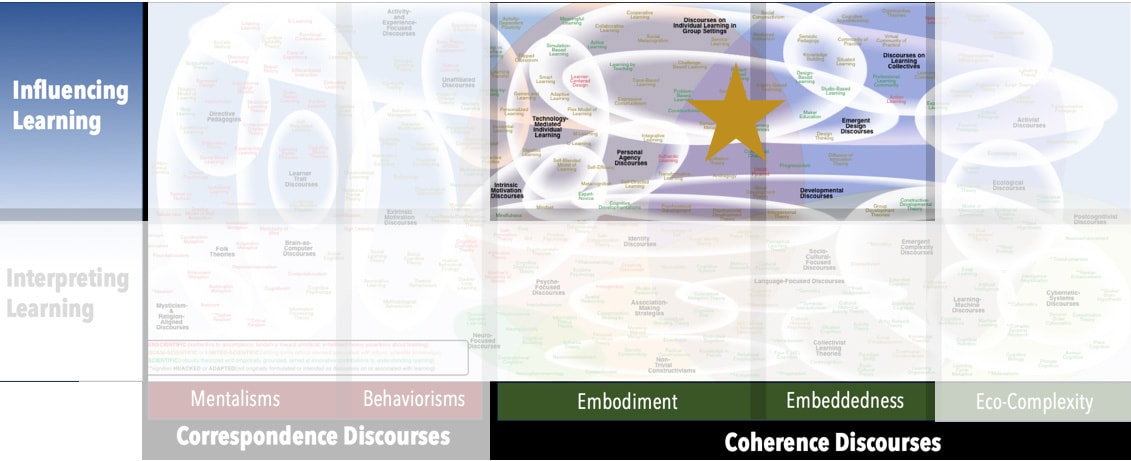AKA
Facilitative Teaching
Focus
Role of positive learner–teacher relationship in enabling learningPrincipal Metaphors
- Knowledge is … scope of possible action and interpretations
- Knowing is … meaningful application
- Learner is … relational being (with teacher)
- Learning is … expanding possibilities
- Teaching is … facilitating
Originated
1980sSynopsis
Facilitation Theory begins with the assertion that a person cannot teach another directly (i.e., there can be no transfer of information or knowledge from one to the other). According to this perspective, that means teaching can only be facilitating:- Proactive Facilitation – when old learning enables new learning
- Retroactive Facilitation – when new learning renders previous learning more robust or profound
- Four-Quadrant Model of Facilitated Learning (Craig Greber, 2000s) – a 4-step model aimed at gradually shifting responsibility from teacher to learner: Quadrant 1: direct information and instruction from the teacher; Quadrant 2: less-direct, strategy-focused advice in the form of questions, feedback, and prompts from the teacher; Quadrant 3: self-observation strategies, such as verbal self-instructions and visual cues; Quadrant 4: internalized self-directing activities, such as self-instruction and self-monitoring
- Model Facilitated Learning (Model-Based Learning) (J. Michael Spector, Pål I. Davidsen, 2000s) – a mode of teaching that is structured around development of and interaction with models – that is, representations of problems, solution strategies, and solutions that can be directly engaged by learners
Commentary
Facilitation Theory has been criticized for its orienting assumption on inherent human goodness and for the weight of responsibility that it places on the teacher’s relationship with the student. In both regards, given the array of events and relationships that are happening in every learner’s life, it would seem excessive to expect a facilitative teacher to prompt all students toward becoming excited, learning, changing beings.Authors and/or Prominent Influences
Carl RogersStatus as a Theory of Learning
Facilitation Theory is not a theory of learning. It does not engage at all with matters related to the complex dynamics of learning.Status as a Theory of Teaching
Facilitation Theory is a theory of teaching.Status as a Scientific Theory
Facilitation Theory is associated with a fairly robust and substantial body of evidence. Teachers who are able to establish and maintain positive personal relationships with students tend to see fewer disciplinary problems, better achievement results, higher-order thinking, less vandalism, and improvements in self-regard. However, because the Facilitation Theory does not demonstrate a critical awareness of its theoretical commitments around learning, it does not fulfill all our criteria for a scientific theory.Subdiscourses:
- Four-Quadrant Model of Facilitated Learning
- Model Facilitated Learning (Model-Based Learning)
- Proactive Facilitation
- Retroactive Facilitation
Map Location

Please cite this article as:
Davis, B., & Francis, K. (2024). “Facilitation Theory” in Discourses on Learning in Education. https://learningdiscourses.com.
⇦ Back to Map
⇦ Back to List
